Are you looking for new ways to target your most engaged blog readers to build your email list? An email opt-in form is a perfect way to do that, but an inline opt-in form is an even more powerful way to grow your list.
Inline forms are forms that you can embed in blog posts or page content.
With an inline form, you can turn any post into a content upgrade, gate part of your content to provide added incentive for readers to subscribe, and track sign ups with campaign targeting.
Here are eight ways you can use inline opt-in forms to build your email list strategically and grow your blog readership.
1. Reach Engaged Readers With a Before-and-After Post Inline Form
The space before and after your posts are great spots for an opt-in form. You’ll encourage casual readers to sign up if they’ve read a few posts but keep forgetting to subscribe. Engaged readers will sign up right after they finish reading, and you’ll save them the effort of having to scroll back up to the top.
Keep reminding them by placing one at the end of every post on your site, as OptinMonster does on their site.
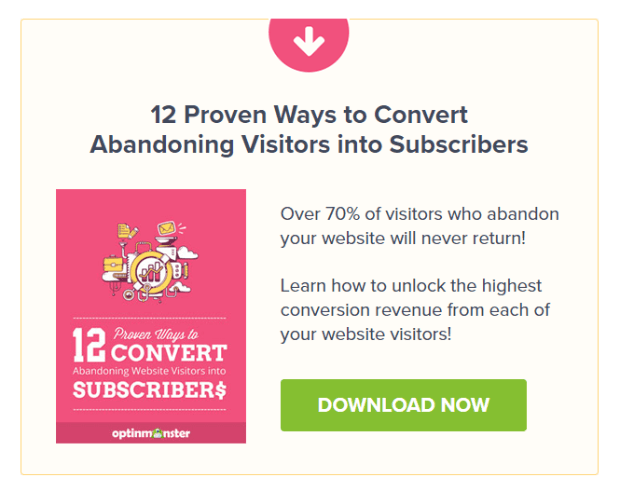
You can also test which position works better by placing an inline form after the post on your most recent ones and a form before the post on older ones, or vice versa. You may be surprised.
2. Lock Content Halfway Through the Post
When you lock or gate your content, you ask readers to perform an action to get access to the full version of the content. Opt-in tools can be set up to blur or hide content after a set point on a page, so readers have to subscribe to your email newsletter to see the whole post. It’s a powerful way to gather information on your most engaged readers.
WholeWhale, a digital marketing agency for non-profits, uses a content lock very successfully on their blog, offering readers a sneak peek of the post and then asking them to subscribe to get the rest of the content.
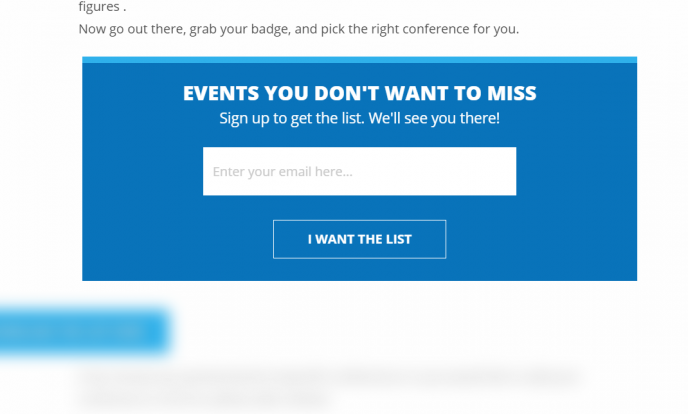
3. Lock Content After Readers View Multiple Posts
Ever try to read more than 3 or 4 articles on Medium or the NYTimes.com? If so, you’ve bumped up against their free reads limit, after which they then ask you to subscribe. You can do that with your blog too.
Add the lock or gate to your highest-performing blog posts for the best results. Then, when readers try to dig further into your site and read more, they’ll be locked out until they subscribe to your email list. You can even reset the lock every 30 days to increase their appetite for your content. This method works well on blogs because there’s a clear incentive readers will get when they subscribe.
4. Increase Above-the-Fold Engagement on Pages
Above-the-fold content is a hold-over from the early publishing days, where the most significant stories appeared at the top of the front page. Anything else on the front page was hidden because it was folded over. The same effect applies to websites and other digital content.
People still engage more with content that appears at the top of the page, or, above-the-fold. It’s high-visibility content that should grab your reader’s attention and present them the content they’re looking for, so they don’t leave. Unlike newspapers, above-the-fold applies to every page of your website, not just the homepage, so what you present there can have a significant impact.
If you’re looking to increase email subscribers, consider adding an inline form above-the-fold on any page of your site where you want to encourage sign ups like Copyblogger does here:
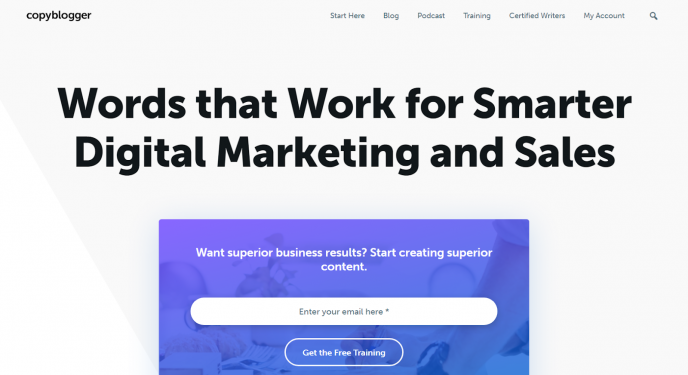
5. Make Offers Through Inline Forms While People Read
Many blogs offer a lead magnet as a way to encourage subscribers. It could be a checklist, an eBook, report, recording, or anything else that’s helpful and valuable to readers. If you use a lead magnet, make sure it: solves a reader problem, is specific, demonstrates your expertise or knowledge, and can be easily downloaded.
James Pollard from The Advisor Coach converts an average 1.86% of his readers with an inline form that offers a free PDF. On some pages, it converts even more, anywhere from 3-6%.
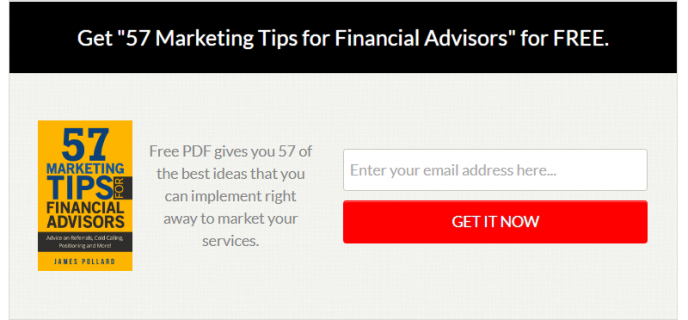
6. Increase Sign Ups with 2-Step Inline Forms
Use psychology to increase email sign up through a two-step inline form. People who begin an action are more likely to complete it, so a simple yes/no inline form will increase conversions no matter where you put the form. Additionally, people are more likely to subscribe if they feel they have a choice.
Try asking them a simple yes or no question or give them a choice on whether to accept free, valuable information, like this example from Digital Marketer does.
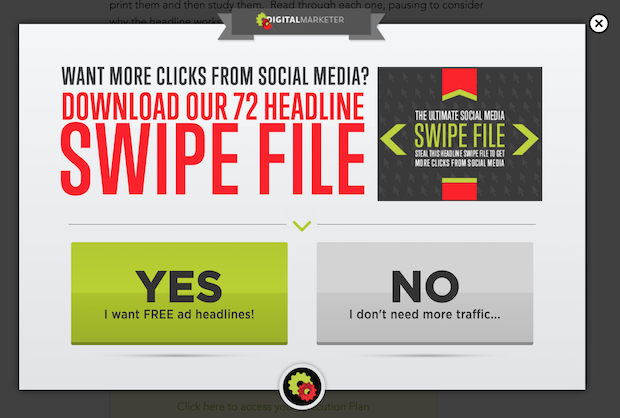
7. Use Social Proof to Get More Subscribers
Social proof is another psychological effect you can use to encourage sign up on your inline forms. Robert Cialdini, professor of psychology and bestselling author of Influence: The Psychology of Persuasion, says, “If you can get people who are similar to the person you’re trying to persuade to speak on your behalf, it’s a lot easier for you than if you have to try to hammer your message into a reticent mind.”
In other words, let others persuade your readers for you. Include copy to that effect on your inline form to engage that effect with your blog readers, such as “Join over 5,000 other readers” or “10,000 people get my tips every week, why not you too?” That’s how Content Marketing Institute grows its email list, by showing that over 210,000 marketers are on the list (and they toss in a free, exclusive eBook too)!
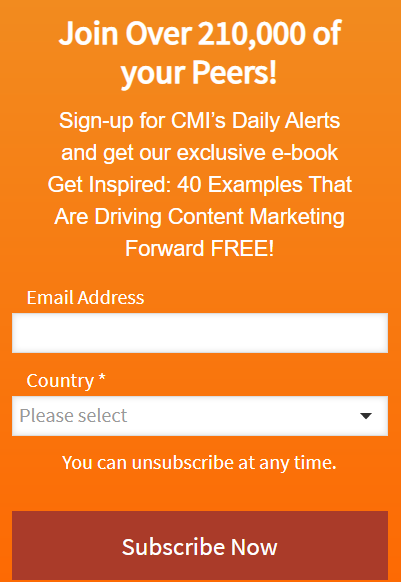
8. Explain the Value of Their Time Investment
Another way you can encourage sign ups to your opt-in form is to add a time element to the copy. That’s what Ramit Sethi does on IWillTeachYouToBeRich.com with a quiz inline form.
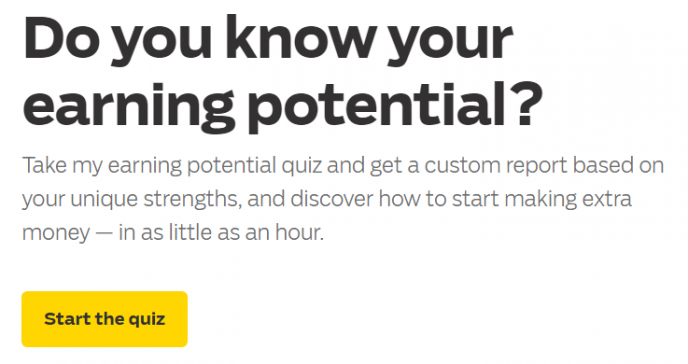
Sethi knows people want to find out how to earn extra money online, that’s why they’re reading his site. He encourages people to sign up by asking them to take a short quiz, which promises solutions to the question, “Do you know your earning potential?” People are there because they want answers, so he promises customized ones that’ll get them earning money in less than an hour.
There you are eight powerful ways to encourage more subscriptions through your inline form. Use these strategies to build your email list today.
Syed Balkhi is an award-winning entrepreneur and online marketing expert. He is the co-founder of OptinMonster, WPBeginner, MonsterInsights, and WPForms.
